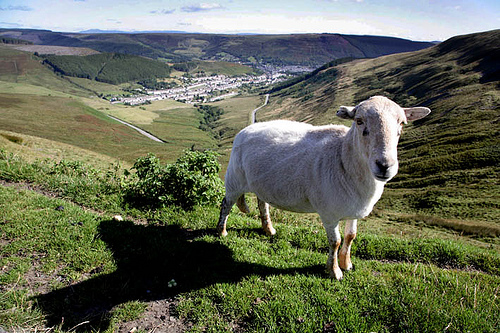All about Cwmparc in the war.The day the war came to Cwmparc On the night of April 29th/30th.1941 the small mining village of Cwmparc was devastated by the bombs of Hitlers Luftwaffe, an event that survivors of that night of terror will never forget. The reason why this small Rhondda settlement was targeted will never be known, but some theories suggest that possibly a bombing mission planned for Swansea or Port Talbot had failed, causing the German bombers to offload their bombs on their way home. Whatever the reason for the raid the result brought devastation and death to this small close-knit mining community. Most of the bombs fell on houses in Treharne Street and Parc Road, and the resultant death toll was twenty-seven men, women and children. One of the most poignant aspects of the raid was the death of three young evacuees from London. The three, 13-year-old George Jameson, his 11-year-old brother Ernest, and his sister Edith lived at 14 Treharne Street, had been sent to Cwmparc as a place of safety in order to avoid the dangers of the London Blitz. Another victim was Ivor Wright, a member of the local Home Guard. Ivor had seen a parachute floating to the ground, and believing it to be a German parachutist ran to confront the invader, it was however a German incendiary bomb dropped attached to a parachute, which killed him instantly
Following the war in November 1948 a memorial service was held outside the Cwmparc Library and institute commemorate the sacrifice of the 27 victims of the raid. An illuminated two faced clock and a plaque to those who had died in the Second World War was unveiled by Colin Harries a 14 year old schoolboy from Treharne Street, who had been saved that night from a bombed house.
AN entire community has remembered how it was devastated at the hands of Hitler’s Luftwaffe sixty-six years ago.
Children and staff at Parc Primary School in Cwmparc in the Rhondda held a special Remembrance Concert to commemorate the fateful night of April 29th 1941 when twenty-seven men, women and children lost their lives in their small mining village.
Last year the school unveiled a specially commissioned plaque to remember those who lost their lives that night. One year later and they saw a school hall packed with parents and grandparents – many of whom either remember the bombing or lost a loved one because of it.
Headteacher Joy Bishop welcomed the audience who were overjoyed to watch a special premiere of a DVD filmed by the pupils with the assistance of Treorchy Comprehensive School. It featured a history of the village from its early agricultural days to the sinking of the Park and the Dare Collieries right through to the outbreak of World War II. The children filmed the entire DVD themselves as well as undertaking personal interviews with survivors of the bombing and those who remember the event.
The school band performed a selection of congregational hymns while the school choir sang Shine Jesus Shine and Amazing Grace much to the delight of the proud parents and relations in the audience.
A collection of photographs of Cwmparc were also shown on the big screen, while pupils told the story of how their village came under attack from enemy bombers. In a moving tribute each of the children also individually named the twenty-seven victims before a recording of Louis Armstrong’s rendition of What a Wonderful World was played and modern-day photographs of the beautiful landscape around the valley was also shown.
A poignant ceremony was also held at the actual memorial in the schoolyard where members of Treorchy Male Choir sang Cwm Rhondda and For the Fallen before the Last Post was heard and the Standards of the Royal British Legion were lowered in memory of the war dead. Relatives of the victims also laid wreaths at the memorial stone.
Rhondda Cynon Taf Council’s Mayor Cllr Joyce Cass attended the event for the second consecutive year and said once more she was overjoyed and very moved by the occasion.
“Once again the children and staff of Parc Primary School have excelled themselves in their endeavour to ensure that those twenty seven victims of the bombing are never forgotten.
“It was a fitting tribute to them all. The children were magnificent as always in their presentations and performances and I applaud all the hard work undertaken by them and the community at large to make this a very special annual event.”
.
Joy Bishop, the Headteacher of Parc Primary added “The response from the community has been amazing and its down to their requests that we’re making it an annual event. We’ve had so many letters and donations and it’s a lovely feeling to put something back into the community.
“It’s become such an occasion for everyone concerned and we’re all looking forward to next year.”
The reason why Cwmparc was targeted by the Luftwaffe on April 29th 1941 has never been known. Some theories suggest that following bombing missions on Swansea or Port Talbot German fighters returned home and dropped their bombs en route – probably to save fuel - in the Rhondda after possibly seeing the smoke rise from the Park or Dare Colliery.
Whatever the reason for the raid, the result brought devastation to the close-knit community. Most of the bombs fell on houses in Treharne Street and Parc Road and the resultant death toll of twenty-seven men, women and children also included a number of evacuees from the Midlands who had been sent to the Rhondda in the hope of safety.

